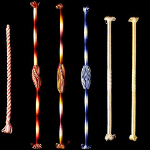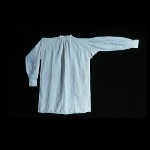Artifact: Latch Lock, Key, and Catch

Materials: Wrought Iron
Dimensions: a: H. 8 7/8 in. b: H. 3 3/4 in. c: H. 2 3/8 in.
Date: 1730-1770
Origin: Pennsylvania
Collection: Metropolitan Museum of Art
License: OASC
Ledger Entry: Lock

Department: Building
Customer: James Hamilton
Ledger Page: 57
Imported From: There are documented locksmiths in the British colonies and many locks would likely have been produced locally; however locks were also imported from British production centers, such as Birmingham.
Product Description
Early, inexpensive locks were made of wood. They were more complex than simple latches, but nonetheless did not require the same amount of skill as forged locks. Wealthy homeowners in the Chesapeake preferred brass (over iron) locks. These were used in both formal spaces as well as areas for storage.
Citation: Cary Carson & Carl R. Lounsbury, ed., The Chesapeake House: Architectural Investigation by Colonial Williamsburg (Chapel Hill: University of North Carolina Press, in association with the Colonial Williamsburg Foundation, 2013).; Gabrielle M. Lanier & Bernard L. Herman, Everyday Architecture of the Mid-Atlantic: Looking at Buildings and Landscapes (Baltimore: Johns Hopkins University Press, 1997).
Historical Price: 8 pence; Modern USD: $7.47
Product Variations
The databases record twenty-one lock purchases. They include cupboard, chest, and other types of locks. In price, these range from eight pence for one lock to eight pounds for one lock.






